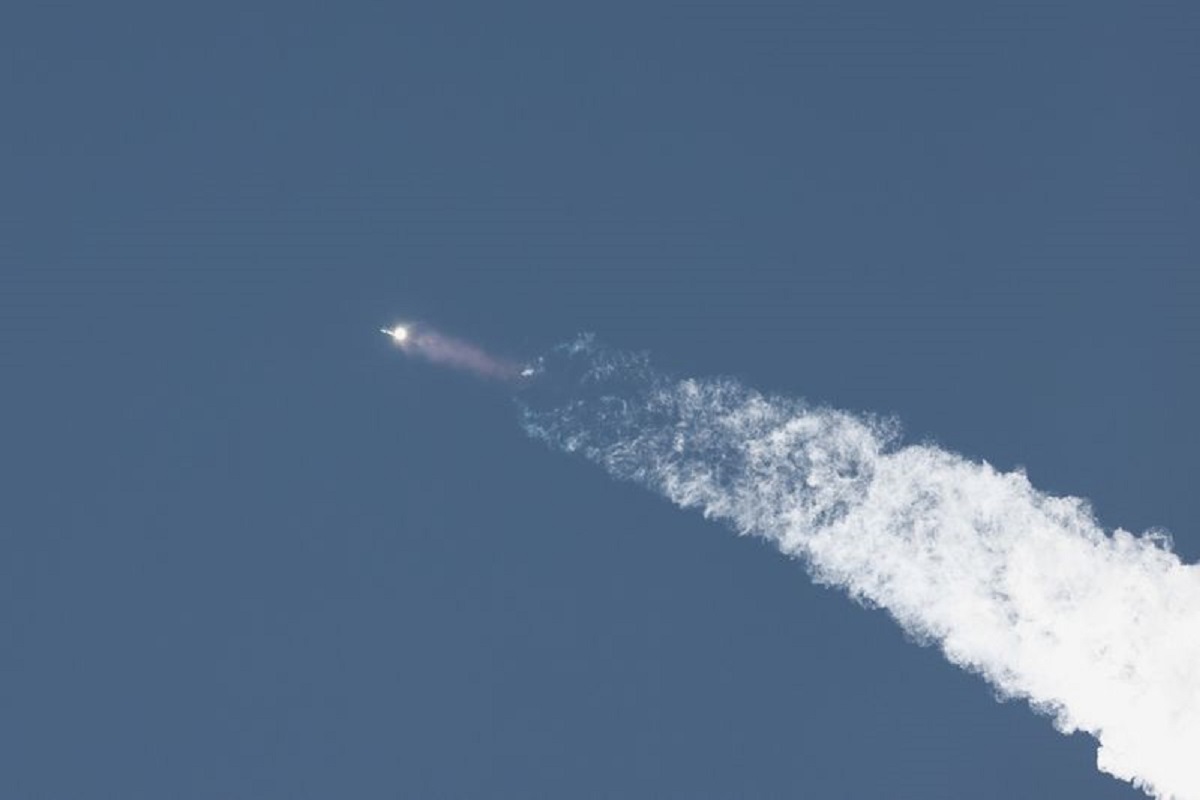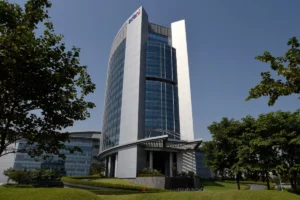
The next-generation Starship spacecraft of SpaceX takes flight from the company's Boca Chica launchpad atop its potent Super Heavy rocket.
Seven months after its first effort to reach orbit ended in an explosion, SpaceX’s next-generation spacecraft Starship, designed to carry astronauts to the moon and beyond, soared into the sky on Saturday during a repeat test launch from the Texas Gulf Coast.
Greater in height than the Statue of Liberty, the two-stage rocket ship took off on a scheduled ninety-minute unmanned space mission from the Elon Musk-owned company’s Starbase launch pad in Boca Chica in Texas, east of Brownsville. This was only the second time that Starship had been launched atop its massive Super Heavy rocket booster. The rocket ship was seen rising from the launch tower into the morning sky during a live SpaceX livestream of the lift-off, while the Super Heavy’s cluster of potent Raptor engines thundered to life in a ball of flame and billowing clouds of exhaust and water vapor.
Also Read: Australia vs. India: A cricket rivalry played by and for cricket
The main goal of the test mission was to launch Starship into space, just short of Earth orbit. By doing this, SpaceX would be one step closer to realizing its goal of building a big, multifunctional spacecraft that will enable it to return people and supplies to Mars and the moon for NASA later this decade. The creator, CEO, and chief engineer of SpaceX, Elon Musk, also envisions Starship someday taking the place of the company’s reliable Falcon 9 rocket as the focal point of its launch enterprise, which currently launches the majority of the world’s satellites and other commercial payloads into orbit.
NASA, SpaceX’s main client, stands to gain a great deal from Starship’s success since the American space agency is depending on it to be a key component of Artemis, its human spaceflight program, which will replace the Apollo missions, which launched humans to the moon more than 50 years ago. In addition, if Saturday’s test flight goes well, the Starship-Super Heavy combination will be more potent than NASA’s Space Launch System (SLS) rocket and Orion capsule, which made their joint debut in December 2022. Propelled by 33 Raptor engines, the imposing first-stage booster of Starship reaches a maximum height of approximately 400 feet (122 meters) and generates thrust twice as strong as the Saturn V rocket that launched the Apollo astronauts to the moon.
Also Read: MLA Dr. Rajeshwar Singh Urges Law Minister to Address Deepfake Threats, Proposes Remedial Measures
The mission’s goal is to launch Starship from Texas into space, just missing orbit, and then plummet through Earth’s atmosphere to land off the shore of Hawaii. Due to an emergency hardware change involving the flight control system, the launch that was originally planned for Friday was postponed by one day. Less than four minutes into a scheduled ninety-minute test flight on April 20, the spacecraft blew itself to pieces. The voyage was fraught with mishaps from the beginning. SpaceX has admitted that before the flight was canceled, the lower-stage booster rocket did not separate as intended from the upper-stage Starship, and that some of the Super Heavy’s thirty-three Raptor engines malfunctioned during the ascent.
HAZARD SUCCESS
The company’s engineering culture is based on a flight-testing approach that pushes spacecraft to the brink of failure and then repeatedly refines improvements, making it seen as more risk-tolerant than many of the more established competitors in the aerospace sector. NASA would be extremely concerned if the test mission failed at any time because it is depending on SpaceX’s fast-paced rocket development philosophy to deliver humans to the moon as soon as possible in order to compete with China’s lunar aspirations.
Depending on how far the spacecraft travels this time, it may be difficult to determine whether the conclusion was successful or unsuccessful. NASA Administrator Bill Nelson likened the success of SpaceX’s previous rocket development efforts to Starship’s test campaign, emphasizing the need for speed due to the China rivalry. “How was the Falcon 9 developed? Nelson told Reuters on Tuesday, “They went through a lot of testing, and sometimes it blew up.” “They’d find out what went wrong, they’d correct it then go back.” In April, the combined spacecraft was barely halfway to space at its goal height of 90 miles (150 km) when it reached a high altitude of approximately 25 miles (40 km) before igniting.
Also Read: David Beckham praises Sonam Kapoor, Shah Rukh Khan and Gauri Khan for inviting him for dinner
According to Musk, an internal fire during Starship’s ascent damaged its processors and engines, causing it to go off track. The rocket exploded about 40 seconds after the automatic-destruct command was supposed to be initiated.
The blastoff’s force destroyed the launch pad itself and set off a bush fire that spread to 3.5 acres (1.4 hectares). Nobody was hurt. Since then, SpaceX has strengthened the launch pad with a huge steel plate that cools with water. This is only one of several corrective measures that the Federal Aviation Administration of the United States mandated before approving a launch license for the second test flight on Wednesday.
To read more such news, download Bharat Express news apps






















